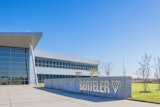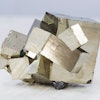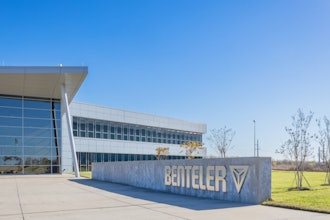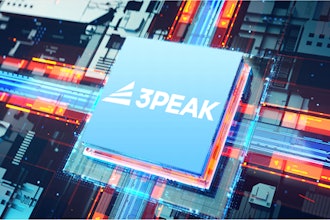The companies that purchase and operate the equipment that engineers design today, typically have plant operations and maintenance engineers tasked with keeping automated systems up and running efficiently. They are the people responsible for safeguarding assets and worker safety, as well as performing scheduled maintenance and replacing worn or damaged parts when necessary.
That’s why, in addition to providing high-quality, reliable products at competitive pricing, it is also important for machinery OEM design engineers to keep in mind that ensuring convenient aftermarket maintenance and serviceability are vital to building great customer relationships.
One approach many automation industry leaders have adopted to facilitate aftermarket maintenance and repairs is a holistic design strategy that standardizes on configurable components, whenever possible. End users can then replace parts quickly and easily, with minimal production downtime. This is the core element of a ‘design for serviceability’ philosophy.
Modular Approach to Design
Even though many machines and automation systems require some degree of customization to meet specific application requirements, the fact is that most industrial equipment is comprised of individual mechanical and motion control parts. These might include linear actuators, shafts and guides, locating pins, bushings, ball bearings, cylinders, steel plates, and other types of hardware.
In today’s marketplace, all of these machine components can be precisely specified and configured in different sizes, dimensions, materials, and finishes by a qualified components supplier. The supplier you choose to work with should also be able to provide native CAD files for downloading to eliminate the need to create additional engineering drawings.
In those cases where custom-designed parts are called for, once the part has been designed and ordered, some leading components suppliers will allow you to ‘standardize’ the part by assigning a unique part number in the machine’s Bill of Materials (BOM). This can then be stored in the supplier’s database for fast, easy reordering when part replacement is required.
Component configuration and standardization eliminates many of the complex and time-consuming activities associated with custom part design. It’s an approach designed to streamline engineering workflow, save time and costs, and increase the efficiency of the OEM’s engineering resources. It also makes machine or system assembly easier, whether performed in-house or at the customer’s plant, because the components have been configured to exacting specifications. For those responsible for downstream maintenance and repair, part reordering becomes simpler and easier as well.
Real-World Examples
Aisin USA Manufacturing
Aisin USA. of Seymour, IN, manufactures products for North America’s light- and medium-duty automotive market. A subsidiary of Aisin Seiki in Japan, the U.S. firm supplies world leading OEMs, such as Toyota, Honda, GM, Cummins, Nissan, and Mitsubishi. AISIN’s components, systems, and assemblies are used in automobile door frames, latching systems, seating, trim moldings, and more.
To save on engineering and production costs and speed up machine building, Aisin’s design/build engineering team has adopted a strategy of replacing custom-made parts wherever possible with configurable components from Misumi USA. To test the concept, Aisin engineers standardized on several configurable assembly fixture locating pins found in the Misumi catalog, instead of producing the parts internally.
The experiment proved successful – Aisin was able to reduce the quantity of its spare parts inventory and the cost of purchasing and storing a large supply of automotive locating pins. Today, the group specifies configurable mechanical components in virtually every piece of manufacturing machinery it creates. Configured parts now purchased from Misumi include: LX Series linear actuators, linear motion guides, machined blocks and plates, fasteners and stoppers, locating devices, rotary shafts, gears and sprockets, bushings, and couplers.
Eric Peery, Aisin USA’s section manager of Kaizen Engineering, notes: "Misumi’s comprehensive selection of configurable components, along with its online configuration and design support tools, have shortened our design engineering time, while allowing us to configure components tailored to our exact specifications more cost-effectively than we could make them ourselves."
Nissin Brake Ohio
Another example of the successful adoption of modular design is Nissin Brake in Findlay, OH, which supplies brake and control system parts and assemblies for automotive and non-automotive applications. The company serves automotive OEMs, such as Honda, Harley-Davidson, and GM, as well as many non-automotive manufacturers.
To produce its extensive product line-up, Nissin Brake has developed expertise in a wide range of manufacturing processes. In designing customer projects, Nissin’s engineering team also strives to standardize on Misumi’s configurable components.
After a customer order is received and entered, Nissin’s design process starts with a rough concept of what equipment will be needed to fulfill the customer demand and cost requirements. After baseline manpower and cycle time numbers are generated, the actual equipment design engineering process begins. In the case of the company’s ABS (Anti-Lock Brake System) Modulator Department, Nick Fahim, Design Engineer, describes what happens next:
"Our small team of design engineers works together to decide what form the assembly equipment will take the level of automation, methods of part detection/quality verification, and overall equipment controls. The next step is the 3D design of the equipment using Dassault Systems’ SolidWorks software."
In the course of this process, the engineers incorporate as many of Misumi’s configurable components as possible to speed up design time. After the modeling is completed and approved, the assembly prints and drawings are created along with the BOM, from which all parts are ordered for the project.
"We work on a wide range of design projects, from small, hand assembly station jigs, to very large fully-automated work cells," explains Fahim. "That’s why we try to specify configurable parts as much as possible, because it simplifies our procurement process and significantly reduces the design time for each project."























